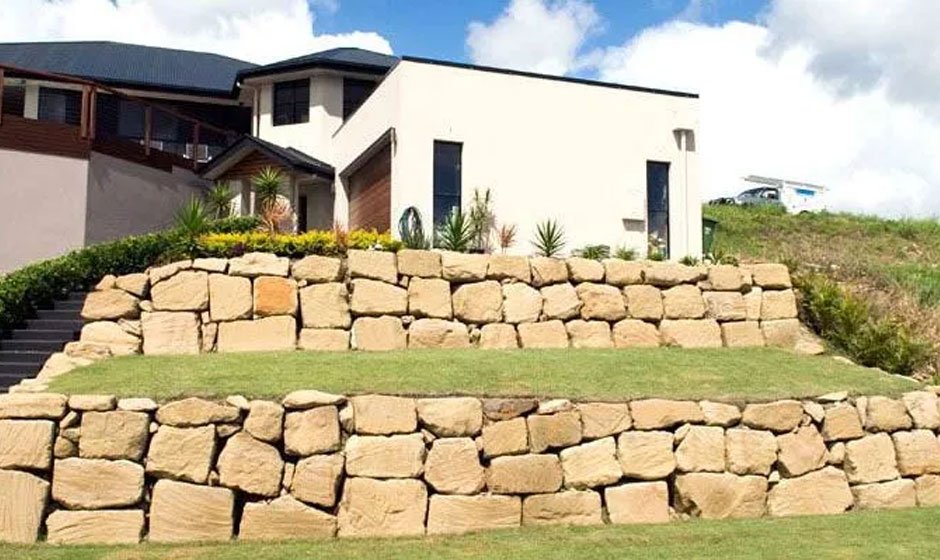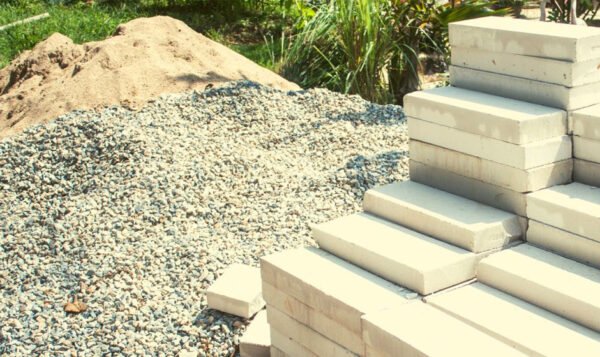5 Essential Tips for Building Durable Rock Walls

Rock walls are more than just a beautiful enhancement to any outdoor space—they are a testament to enduring construction methods that have proven their longevity. As a homeowner or developer, building a solid rock wall is a valuable investment that can enhance your garden or increase property value.
This article will explore five essential tips to ensure your rock wall is sturdy and long-lasting. For an in-depth look into Hawaiian rock walls construction, check out our comprehensive guide at Honolulu Concrete.
Tip 1: Selecting the Right Type of Rock
Choosing High-Quality Materials
The first step in building a durable rock wall is selecting the correct type of rock. The selection of material significantly affects the durability and look of a wall. Lava rock walls are famous in Hawaii due to their natural beauty and resilience. Other options include blue and moss rock, each offering unique aesthetic and structural benefits.
- Lava Rock Wall: Known for its durability and unique texture, lava rock is ideal for creating a natural, rugged look.
- Blue Rock: Looks super smooth and stays strong against all kinds of weather.
- Moss Rock: Provides a rustic, aged look, perfect for creating a naturalistic setting.
Pro Insight: When choosing rocks, consider local availability and environmental conditions. Consulting with rock wall contractors in Oahu or Hawaii can provide valuable insights and sourcing options.
Tip 2: Preparing a Solid Foundation
Laying a Strong Foundation
The durability of a rock wall is determined by the strength of its base. It is essential to prepare the foundation correctly to avoid any future movement or sinking.
Here is a systematic procedure for establishing a sturdy base:
- Excavation: Begin by excavating a deep, wide trench to accommodate the base rocks.
- Leveling: Make sure the ditch is flat to have a strong foundation.
- Compacting: Compact the soil at the bottom of the trench to reduce settling.
Pro Insight: Experienced masonry contractors in Hawaii recommend using a gravel base to enhance drainage and stability. This practice is critical in areas with high rainfall, like Honolulu.
Tip 3: Mastering Rock Laying Techniques
Effective Rock Placement Methods
The technique you use to lay your rocks can significantly affect the wall’s durability.
There are two primary methods: dry stacking and mortar binding.
- Dry Stacking: Involves stacking rocks without mortar, relying on the weight and friction of the rocks to hold the wall together. This method allows for natural drainage and a more rustic look.
- Mortar Binding: Uses mortar to bind the rocks together, providing additional strength and stability. This technique is ideal for taller walls or retaining walls.
Pro Insight: For a blend of durability and natural aesthetics, consider using a hybrid approach in which the base rocks are mortared for stability and the upper layers are dry-stacked.
Tip 4: Incorporating Proper Drainage Solutions
Ensuring Effective Drainage.
Proper drainage prevents water accumulation behind the wall, reducing pressure build-up and potential failure.
Here are some drainage solutions to consider:
- Weep Holes: Small openings at the base of the wall to allow water to escape.
- Gravel Backfill: Using gravel behind the wall to facilitate drainage.
- Proper Grading: Ensuring the ground slopes away from the wall to direct water flow.
Pro Insight: Local contractors emphasize incorporating these drainage solutions during construction to avoid costly repairs later.
Tip 5: Regular Maintenance and Inspection
Keeping Your Rock Wall in Top Condition
Even the most well-built rock walls require regular maintenance to ensure longevity.
Here’s a checklist to keep your wall in top condition:
- Regular Inspections: Check for signs of shifting, cracks, or bulging.
- Repairing Mortar: Repoint mortar joints as needed to maintain structural integrity.
- Cleaning: Remove dirt, moss, and debris to prevent deterioration.
Pro Insight: Concrete repair services in Oahu can provide professional maintenance and repair services to prolong the life of your rock wall.
Conclusion
Building a durable rock wall is a blend of art and science, requiring careful selection of materials, proper foundation preparation, practical construction techniques, and ongoing maintenance. By following these five essential tips, you can ensure your rock wall remains a beautiful and lasting feature of your landscape. For more detailed insights and professional advice, visit our comprehensive Hawaiian rock wall construction guide at Honolulu Concrete.
Ready to start your rock wall project? Consult with our expert team at Honolulu Concrete and transform your landscape with a stunning and durable rock walls!



